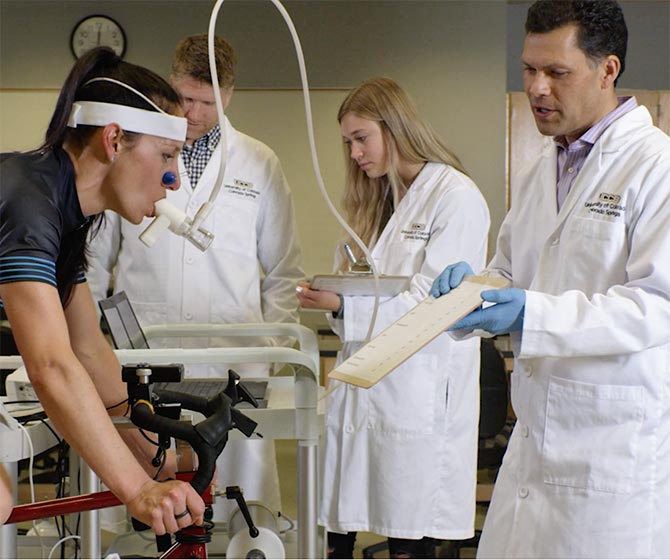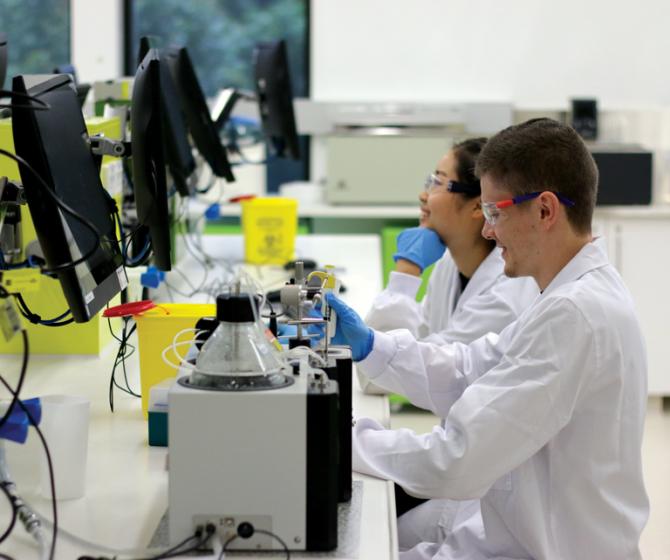Associate Professor Tina Hinton shares her experience of having to make the swift transition from face-to-face teaching to a fully online lesson and lab delivery during the Covid-19 pandemic.
"In the past few months, we have been faced with unprecedented challenges in higher education which have required rapid response in a time of continuous uncertainty."
As an educator and course coordinator at the coalface of this rapid change from traditional face-to-face to a fully online delivery of an undergraduate science course, I was faced with the significant undertaking of re-imagining my curriculum to continue to train students in the concepts, methods of enquiry, and technical skills in a fully online environment while also developing graduate attributes such as collaboration, cultural competence, and interdisciplinary effectiveness.
If it wasn't for the fact that all of my unit of study lessons were already housed in Lt (our existing online learning platform), I can honestly say that I would not have been able to transition so rapidly to a fully online delivery. And when I say rapid, I mean overnight!
Related: How The University of Sydney is transforming the teaching of medical science
Using an online platform to deliver their lab-based courses
Luckily, we have been utilizing the multiple affordances of Lt for the design and delivery of our curriculum for a number of years, so the modifications to our lessons were straightforward - we were able to insert videos of techniques and very quickly re-author lessons to be relevant to the fully online environment.
This also meant less time required to train my teaching teams in online delivery, since they are already highly conversant with Lt for creating and delivering our course content.
Using Lt with video conferencing technology (Zoom) for online teaching
Because we found it relatively easy to transition fully online, our only real challenge was to master Zoom technology! I have found Lt works extremely well with Zoom. Not only have I continued to use Lt to structure the lesson, but I also implement breakout rooms for students to work together in their smaller allocated groups.
In breakout rooms, students are able to login to the lesson using the group login function, and screen share for improved collaboration. This means all group members can work together on their lesson just as if they were in the face-to-face classroom! This has worked so well for our team-based learning tutorials as well as our practicals, with assigned tutors moving between their assigned groups to offer assistance, answer questions, facilitate understanding, and so on.
Related: How Ed Merritt (Southwestern University) moved his lab-based course online.
Easily switch between in-lab and online, whenever you need
Using Lt, our team have been able to continue teaching our classes online without having to start from scratch to learn a whole new online system. It also means that when classes return to usual, our switch back to using Lt for our classes and practicals will be simple too.
"All in all what I'd like to say is that I could not have switched to online delivery in the timeframe required if it wasn't for the fact that we were already using Lt."
Plus, the generosity of ADInstruments to offer free subscriptions while we are struggling with teaching during a pandemic has had a great response: my fellow colleagues who had always wished to use Lt in their curriculum delivery they are now able to try the interface for their course delivery.
Related: Advice for educators: Tips for successfully teaching practical labs in an online environment.

Tina Hinton (BSc Hons, PhD, Grad Dip Sci Psych) is an Associate Professor of Pharmacology at The University of Sydney. She teaches pharmacology to Medical Science, Science, Nursing, Pharmacy, Dentistry and Medicine students and is involved in biomedical sciences learning and teaching leadership and governance.
Tina’s primary research area is neuropharmacology, particularly the role of GABA in stress and stress-related illness, as well as effects of plant-sourced substances on GABA receptor activity with the potential to regulate stress and endocrine responses. Tina has also published on pharmacology curriculum, pharmacology learning activities, and influence of learning space on learner activity. For information about Tina's research, check out her most recent publications.



